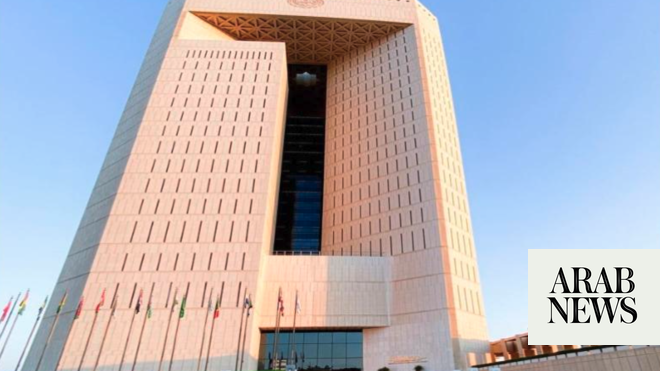RIYADH: Gulf Cooperation Council (GCC) banks are looking to diversify their business models and boost profitability by entering high-growth markets such as Turkey, Egypt and India, a new report has revealed.
Fitch Ratings said the growing interest is due to the countries' favorable economic conditions and attractive growth opportunities.
It is noteworthy that Turkey's appetite for expansion has grown in response to changes in macroeconomic policy, while interest in Egypt has been fueled by increased stability and privatization opportunities.
The report said that despite the high acquisition costs in these regions, GCC banks remain focused on tapping the potential of these markets to offset slowing domestic growth.
According to a report released by McKinsey in June, the GCC banking sector has consistently delivered high returns on capital and impressive valuation multiples compared to global standards.
The strategic diversification of the GCC economy beyond oil and a prudent regulatory framework have strengthened the stability and profitability of banks.
Higher interest rates have further boosted bank profits, contributing to profitability. Over the past decade, banks in the region have outperformed the global average in return on equity (ROE), maintaining a 3-4 percentage point lead in 2022-2023.
While global bank valuations are at historically low levels, GCC banks continue to create value as their ROEs outperform their cost of equity.
McKinsey warned executives to balance short-term profits with long-term strategic objectives, despite record profits for global and Gulf Cooperation Council (GCC) banks fueled by rising interest rates.
Investing in transformational change and efficiencies is essential to staying competitive when interest rates eventually fall.
According to Fitch Ratings, GCC banks' main exposure outside their home regions was concentrated in Turkey and Egypt, which together held $150 billion in assets by the end of Q1 2024.
Such a significant location underscores the strategic importance of these markets to the growth ambitions of GCC banks.
Additionally, the strong and growing financial and trade relations between the two countries are driving interest in India, particularly among banks based in the UAE.
Turkey, Egypt and India have much larger populations than the GCC countries, and have greater potential for banking sector growth due to their strong real GDP growth prospects and relatively small banking systems.
According to the report, for example, the banking system assets-to-GDP ratio in these countries is below 100%, while in the largest GCC markets it is over 200%.
Moreover, private credit-to-GDP ratios are expected to decline significantly by 2023, reaching 27% in Egypt, 43% in Turkey and 60% in India, indicating significant room for expansion in these banking sectors.
According to Fitch, GCC banks are looking to expand their operations in Turkey as the country's macroeconomic policies have shifted more favorably since last year's presidential election.
These changes have reduced external funding pressures and improved macroeconomic and financial stability, leading Fitch to upgrade its outlook on the Turkish banking sector to “improved”.
Fitch forecasts that inflation in Turkey will fall from 65% in 2023 to an average of 23% in 2025, and that GCC banks will stop reporting hyperinflation to their Turkish subsidiaries by 2027.
As the Turkish lira becomes more stable, GCC banks' revenues from their Turkish operations are likely to increase.
At the same time, GCC banks are showing increasing interest in Egypt, driven by a better macroeconomic environment, opportunities provided by the authorities’ privatization program, and the expansion of GCC companies into Egypt.
Fitch recently upgraded its outlook for Egyptian banks' operating environment scores to positive, anticipating further improvement in macroeconomic stability.
These improvements are due to significant foreign direct investment flows between Egypt and the UAE, strengthened International Monetary Fund (IMF) engagement, increased foreign exchange rate flexibility, and a strong commitment to structural reforms.
Fitch expects the Egyptian banking sector's net foreign asset position to improve significantly this year, supported by robust portfolio inflows, remittances and tourism receipts.
Egypt's inflation is expected to decline from 27.5% in June 2024 to 12.3% in June 2025, which could lead to a policy rate cut starting in the fourth quarter of 2024.
Fitch noted that while the Egyptian banking market has high barriers to entry, GCC banks may find opportunities to acquire stakes in the three banks through the authorities' privatization program.
The expansion of GCC companies, particularly those from the UAE, could also help expand the presence of GCC banks in Egypt.
However, rising costs of bank acquisitions in Turkey, Egypt and India could pose challenges to GCC banks' acquisition plans.
In particular, the price-to-book ratio has increased in Turkey and India, as macroeconomic outlooks have improved and operational risks have decreased. Acquisitions in these lower-rated markets could weaken the viability ratings of GCC banks, depending on the size of the target and its financial profile.
Nonetheless, the long-term issuer default ratings of almost all GCC banks are supported by government support and are unlikely to be affected by such acquisitions. In this context, the economic outlook plays a key role in shaping such expansion strategies.
The World Bank updated its growth outlook for a range of countries in April, reflecting significant opportunities and risks.
For example, Saudi Arabia's 2025 economic growth forecast has been revised upwards from the previous estimate of 4.2% to 5.9%, indicating a brighter long-term outlook.
For the UAE, it is expected to increase from 3.7% to 3.9% in 2024, and further increase to 4.1% in 2025.
Kuwait and Bahrain are also expected to see modest growth, while Qatar's forecast for 2024 has been lowered to 2.1%, but revised upward to 3.2% for 2025.
